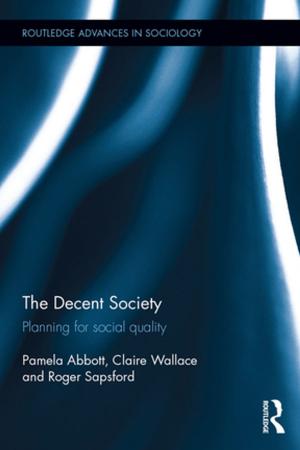Faded and Threadbare Historic Textiles and their Role in Houses Open to the Public
Nonfiction, History, Modern, 20th Century| Author: | Margaret Ponsonby | ISBN: | 9781317136897 |
| Publisher: | Taylor and Francis | Publication: | April 15, 2016 |
| Imprint: | Routledge | Language: | English |
| Author: | Margaret Ponsonby |
| ISBN: | 9781317136897 |
| Publisher: | Taylor and Francis |
| Publication: | April 15, 2016 |
| Imprint: | Routledge |
| Language: | English |
Many historic houses that open to the public in England and Wales - particularly those owned by the National Trust - preserve their contents rather than restore them to a particular period. The former owners of these houses often retained objects from various periods and this layering of history produces interiors that look aged and patinated. Although the reason for this preservation and lack of fashionable renewable can be attributed to declining economic fortunes in the twentieth century, there are many examples of families practising this method of homemaking over a much longer period. Taking National Trust properties as its central focus, this book examines three interlocking themes to examine the role of historic textiles. Firstly it looks at houses with preserved contents together with the reasons for individual families choosing this lifestyle; secondly the role of the National Trust as both guardian and interpreter of these houses and their collections; and finally, and most importantly, the influence of textiles to contribute to the appearance of interiors, and their physical attributes that carry historical resonances of the past. The importance of preserved textiles in establishing the visual character of historic houses is a neglected area and therefore the prominence given to textiles in this project constitutes an original contribution to the study of these houses. Drawing upon a range of primary sources, including literature produced by the National Trust for their sites, and documentary sources for the families and their houses (such as diaries, letters and household accounts), the study takes a broad approach that will be of interest to all those with an interest in material culture, heritage, collecting studies and cultural history.
Many historic houses that open to the public in England and Wales - particularly those owned by the National Trust - preserve their contents rather than restore them to a particular period. The former owners of these houses often retained objects from various periods and this layering of history produces interiors that look aged and patinated. Although the reason for this preservation and lack of fashionable renewable can be attributed to declining economic fortunes in the twentieth century, there are many examples of families practising this method of homemaking over a much longer period. Taking National Trust properties as its central focus, this book examines three interlocking themes to examine the role of historic textiles. Firstly it looks at houses with preserved contents together with the reasons for individual families choosing this lifestyle; secondly the role of the National Trust as both guardian and interpreter of these houses and their collections; and finally, and most importantly, the influence of textiles to contribute to the appearance of interiors, and their physical attributes that carry historical resonances of the past. The importance of preserved textiles in establishing the visual character of historic houses is a neglected area and therefore the prominence given to textiles in this project constitutes an original contribution to the study of these houses. Drawing upon a range of primary sources, including literature produced by the National Trust for their sites, and documentary sources for the families and their houses (such as diaries, letters and household accounts), the study takes a broad approach that will be of interest to all those with an interest in material culture, heritage, collecting studies and cultural history.















